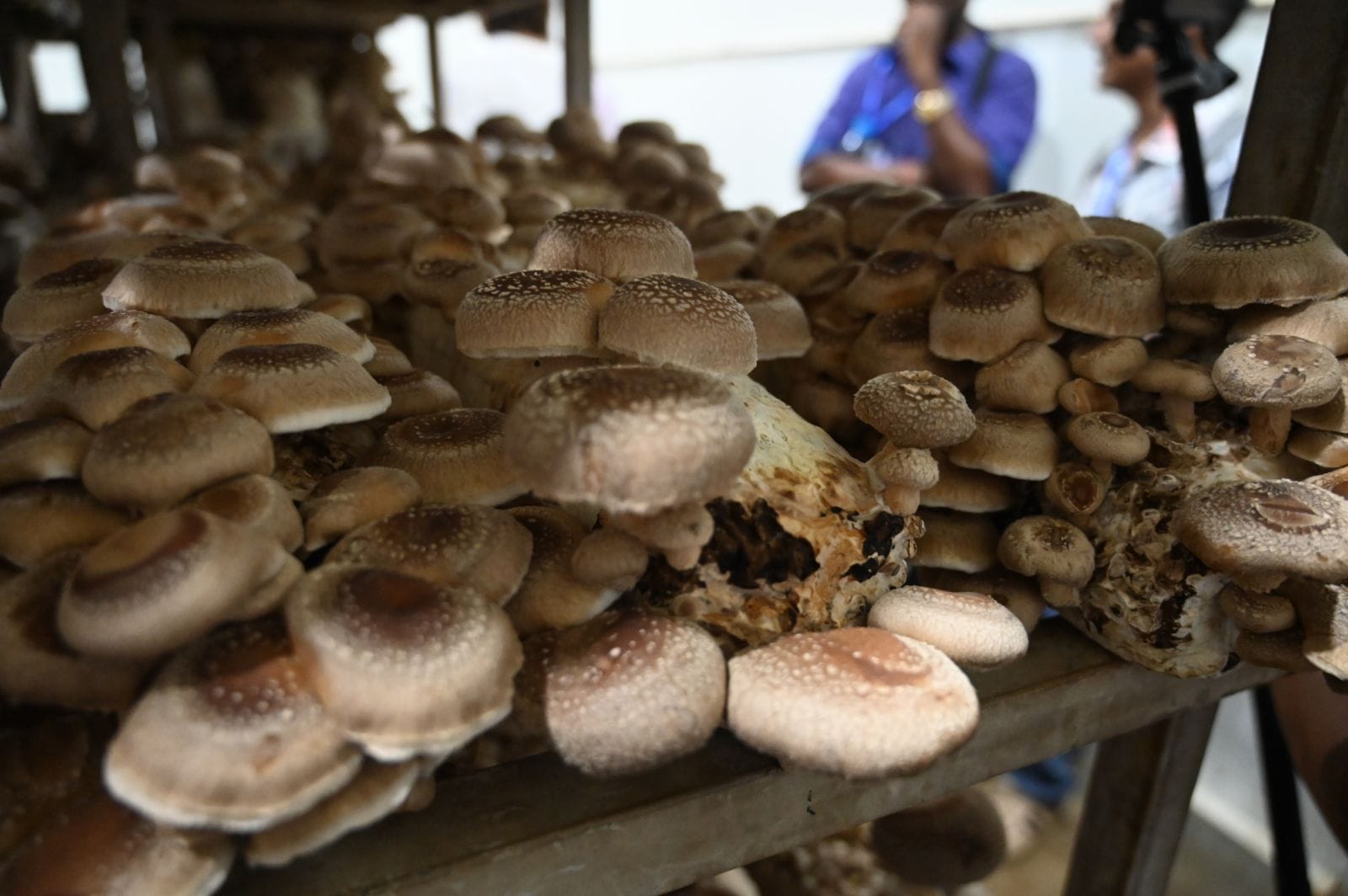JUNCAO DEMONSTRATION SITES IMPRESS INTERNATIONAL PARTICIPANTS
February 22, 2024

Representatives from 18 countries are participating in the “International Workshop on the Applications of the Juncao Technology and its Contribution to Alleviating Poverty, Promoting Productive Employment, and Protecting the Environment” visited various Juncao Demonstration sites in the Western Division and are overly impressed with Fiji’s progress.
In 1986, success was achieved with the invention of the Juncao Technology, which alleviated the prominent contradiction between fungi cultivation and forest conservation and opened up a new pathway for smallholder farmers to shake off poverty in China.
It is a hybrid grass as well as an important multi-functional agricultural resource. Its leaves, stems and roots can be used for different kinds of ecological management, such as soil erosion control and desertification prevention. It can also be used for mushroom farming, or as livestock forage and poultry feed.
Fiji used to run out of livestock forage in the dry season and its fungi products were fully dependent on imports. After the introduction of Juncao technology by China, the Ministry of Agriculture and Waterways is looking at expanding Juncao farming in Fiji.
Juncao grass is used as fodder for the animals and is now being practiced at the Sigatoka Research Station as well as the Yaqara Pastoral Company Ltd in Rakiraki.
Each year in the dry season, Fiji livestock farmers could not make any profit as they had to sell their animals for a lower price because of less weight. This was due to the lack of nutrients in green feed which really hampered the development of Fiji’s livestock breeding industry.
However, today Juncao with its tall stem, wide adaptability, fast growth and high crude protein content has become a favorite livestock feed and is a better alternative to the green corn straw feed for livestock.
Professor Lin Zhanxi of Fujian Agriculture and Forestry University developed the Juncao technology and is currently in Fiji to attend the Juncao Symposium which ends today in Nadi.
“Nowadays, Juncao Technology has been expanded from replacing wood with grass to cultivate mushrooms, replacing grain with grass to develop animal husbandry, replacing wood with grass to produce fibre, fibreboard and pulp, replacing coal with grass to generate electricity which are all geared towards addressing ecological challenges,” said Professor Lin.
“I am happy to see this technology moving to other parts of the world and I know that it will greatly benefit families in Fiji if they harness the technology well,” added Professor Lin.
China’s gift of the Juncao technology to Fiji mainly consists of two parts – technical cooperation and building a demonstration center. The technical cooperation has been carried out in two phases.
In the first phase, eight
varieties of edible and medicinal fungi were produced by the demonstration
project, which ended Fiji’s reputation of not being able to produce edible and
medicinal fungi.
The second phase of the cooperation was initiated in December 2017. In the ensuing three years, 11 Chinese technical experts are working in Fiji to continue with the demonstration project, produce edible and medicinal fungi, and provide training in Juncao technology to help Fiji build its Juncao industry.
The Juncao Technology Demonstration Center in Legalega, Nadi comprises Juncao processing workshops, laboratories, training classrooms and dormitories for trainees.
-ENDS-
